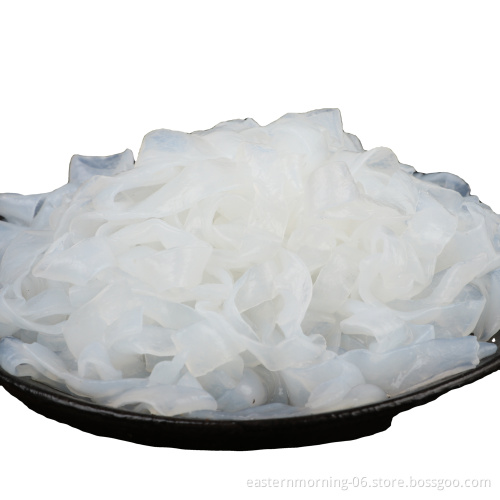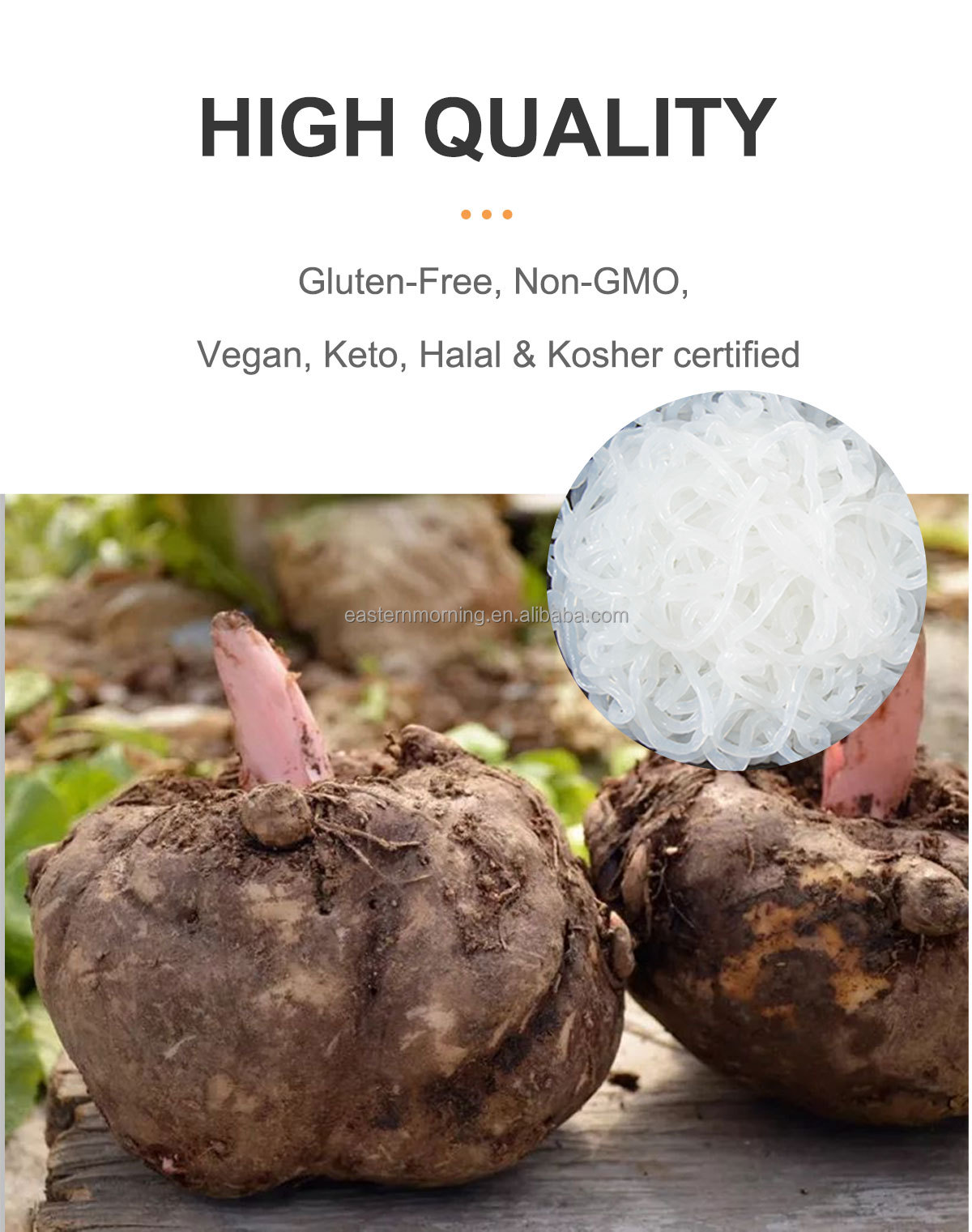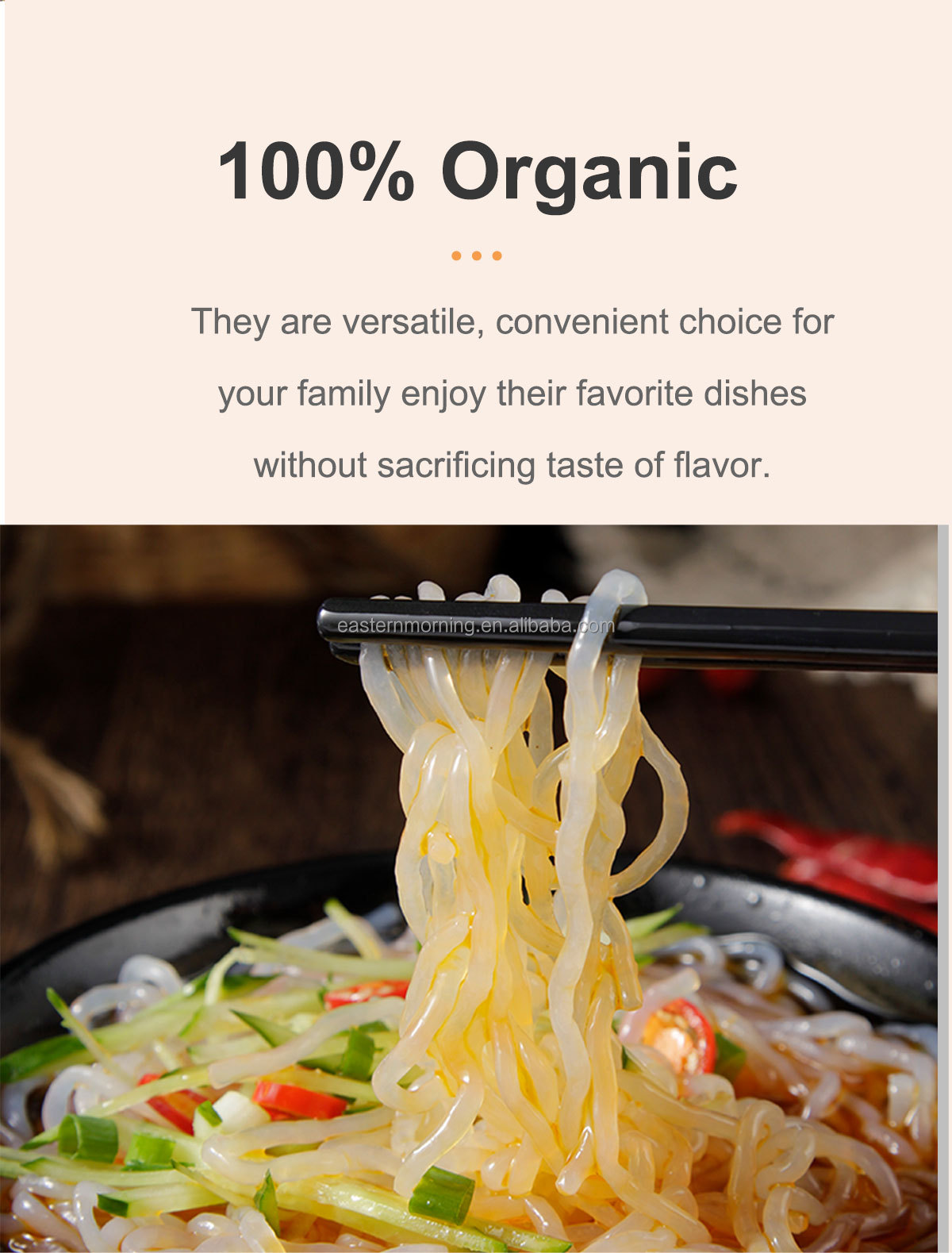
New Konnyaku Pasta Products: Low Fat, No Fish Smell, Perfect for Asian Cuisine
-
$0.481000-99999 bag
-
$0.42≥100000 bag
- Min. Order:
- 1 bag
- Min. Order:
- 1 bag
Quantity:
Your message must be between 20 to 2000 characters
Contact NowBasic Info
Basic Info
| Payment Type: | L/C,T/T |
|---|
Product Description
Product Description
Bio Konjac PASTA - Shirataki Plant-Based Substitute - Healthy Diet Pasta - Rich in Fiber Zero Gluten Low-Carb & Low-Calories
1. Low in calories: Konjac pasta is extremely low in calories, making it an excellent choice for those seeking to manage their calorie intake.
2. Low in carbohydrates: Konjac pasta has a minimal carbohydrate content, making it suitable for low-carb and ketogenic diets. It is a popular choice for individuals looking to reduce their carbohydrate consumption while still enjoying pasta-like dishes.
3. High in fiber: Glucomannan, the fiber found in konjac pasta, is known for its exceptional water-absorbing properties. This characteristic contributes to a feeling of fullness, helping to curb hunger and support weight management efforts.
Additionally, the high fiber content can aid in digestion and promote regular bowel movements.
4. Gluten-free: Konjac pasta is naturally gluten-free, making it an ideal choice for individuals with gluten sensitivities, or those following a gluten-free diet. It provides a safe and tasty alternative to traditional wheat-based pasta.
5. Konjac pasta has a low glycemic index, meaning it has a minimal impact on blood sugar
levels. This makes it suitable for individuals with diabetes or those aiming to maintain stable blood sugar levels.
6. Supports gut health: The soluble fiber found in konjac pasta acts as a prebiotic, promoting the growth of beneficial gut
bacteria. This can help improve overall gut health and enhance digestive function.
7. Versatile and easy to prepare: Konjac pasta has a neutral taste and a unique texture, making it a versatile ingredient in
various dishes. It can be used in soups, stir-fries, salads, or as a substitute for traditional pasta in pasta-based recipes.
8. Long shelf life: Konjac pasta has a long shelf life, especially when stored in a cool and dry place. This makes it a
convenient option for both consumers and food distributors, as it can be stocked without concerns of spoilage or waste.
Konjac pasta, also known as shirataki noodles, is made from the konjac plant's root, which contains a water-soluble dietary fiber called glucomannan. Here are some of the key benefits of konjac pasta:
1. Low in calories: Konjac pasta is extremely low in calories, making it an excellent choice for those seeking to manage their calorie intake.
2. Low in carbohydrates: Konjac pasta has a minimal carbohydrate content, making it suitable for low-carb and ketogenic diets. It is a popular choice for individuals looking to reduce their carbohydrate consumption while still enjoying pasta-like dishes.
3. High in fiber: Glucomannan, the fiber found in konjac pasta, is known for its exceptional water-absorbing properties. This characteristic contributes to a feeling of fullness, helping to curb hunger and support weight management efforts.
Additionally, the high fiber content can aid in digestion and promote regular bowel movements.
4. Gluten-free: Konjac pasta is naturally gluten-free, making it an ideal choice for individuals with gluten sensitivities, or those following a gluten-free diet. It provides a safe and tasty alternative to traditional wheat-based pasta.
5. Konjac pasta has a low glycemic index, meaning it has a minimal impact on blood sugar
levels. This makes it suitable for individuals with diabetes or those aiming to maintain stable blood sugar levels.
6. Supports gut health: The soluble fiber found in konjac pasta acts as a prebiotic, promoting the growth of beneficial gut
bacteria. This can help improve overall gut health and enhance digestive function.
7. Versatile and easy to prepare: Konjac pasta has a neutral taste and a unique texture, making it a versatile ingredient in
various dishes. It can be used in soups, stir-fries, salads, or as a substitute for traditional pasta in pasta-based recipes.
8. Long shelf life: Konjac pasta has a long shelf life, especially when stored in a cool and dry place. This makes it a
convenient option for both consumers and food distributors, as it can be stocked without concerns of spoilage or waste.
How to cook konjac noodles:
1. Open the package of konjac noodles and drain the liquid. Rinse the rice thoroughly under cold water for about a minute.
2. Fill a pot with water and bring it to a boil.
3. Add the rinsed konjac noodles to the boiling water and let it cook for 2-3 minutes. This step helps to remove any residual taste.
4. Drain the konjac noodles using a fine-mesh sieve or colander. Rinse it with cold water again to cool it down.
5. Transfer the rinsed konjac noodles to a non-stick pan or skillet. Cook it over medium heat for about 5 minutes, stirring
occasionally to remove any excess moisture.
6. Once the konjac noodles is heated through, you can add it to your desired dishes or recipes. It can be used as a substitute for regular rice in stir-fries, soups, or other dishes.
7. Season the konjac noodles with your preferred spices, herbs, or sauces to enhance its flavor.
Remember that konjac noodles has a unique texture and may be slightly different from regular noodles. Enjoy your konjac noodles as a low-carb, low-calorie alternative!
2. Fill a pot with water and bring it to a boil.
3. Add the rinsed konjac noodles to the boiling water and let it cook for 2-3 minutes. This step helps to remove any residual taste.
4. Drain the konjac noodles using a fine-mesh sieve or colander. Rinse it with cold water again to cool it down.
5. Transfer the rinsed konjac noodles to a non-stick pan or skillet. Cook it over medium heat for about 5 minutes, stirring
occasionally to remove any excess moisture.
6. Once the konjac noodles is heated through, you can add it to your desired dishes or recipes. It can be used as a substitute for regular rice in stir-fries, soups, or other dishes.
7. Season the konjac noodles with your preferred spices, herbs, or sauces to enhance its flavor.
Remember that konjac noodles has a unique texture and may be slightly different from regular noodles. Enjoy your konjac noodles as a low-carb, low-calorie alternative!






Related Keywords
Related Keywords
You May Also Like
You May Also Like















